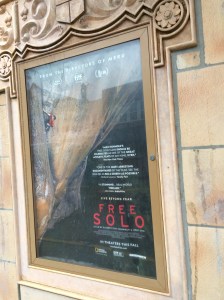A few weeks ago I headed to a nearby public library to engage in an activity that I like a lot: wandering up and down fiction aisles in search of my next read. Sometimes I have a specific author or title in mind. But more often than not I examine the shelves randomly, pulling out books here and there and giving them the once-over. Prone to quick judgments that undoubtedly are incorrect the majority of the time, within seconds I commonly return many of those books to their assigned places. Hey, they had a chance to make a good first impression, but they blew it!
However, by the end of almost every visit I stand at the checkout desk with two or more volumes in hand, hoping that at least one of them is worthy. Sometimes I win. Sometimes I lose. A few weeks ago, at the aforementioned library, I won, arriving home with a pile of books that included An Actual Life, by Abigail Thomas, whom I’d never heard of until her novel caught my roving eye. Normally a herky-jerky reader whose attention span over the last 20 years has fallen off a f*cking cliff, I found myself gliding through Thomas’s opus, digging the journey. An Actual Life, which was published in 1996, is good. Damn good.
It is the saga of married couple Virginia and Buddy, their baby daughter Madeline, and a small cast of other characters. Virginia is 19, Buddy is 21. Though they knew far too little about each other, wanting to do the “right thing” they’d wed after Virginia, during the first coital session she ever had engaged in, became pregnant by Buddy.
Most appropriately and agreeably, Abigail Thomas has endowed Virginia, the narrator of An Actual Life, with a homespun way of talking. Set in small-town New Jersey and Massachusetts circa 1960, the book opens when Madeline is just shy of her first birthday, by which time Virginia and Buddy’s marriage has become nearly as cold as a refrigerator’s freezer section. Not only are they not in love, they never truly were. Unhappy and stumbling through life, Virginia doesn’t know what she should do. And she has little idea what Buddy thinks about their situation, or about anything else really, as he is pretty much the silent type. Around her, anyway. Her love for Madeline, whom she adores, is enough to keep Virginia going, but to where?
Right from the start the book pulls no punches. A couple of hundred words in, mulling over the fact that Buddy is with her only out of a sense of duty, Virginia has this to say:
And there’s really nothing about me to love anyway. There’s not even really any me, exactly. I keep changing inside my skin. There’s no definite person in here. My voice comes out weird and I hardly ever say anything I mean.
Man, those are heavy-duty statements. Virginia’s low self-esteem is on clear display throughout the remaining pages too. Fortunately for the reader, Virginia also is witty as hell. The combination of bleakness and barbed observations makes An Actual Life feel real. There’s nothing strained or artificial here. Thomas writes like a champ.
Unlike the vast majority of books I tackle, An Actual Life got me thinking about life, its challenges, pitfalls, delights, vagaries, and all the rest of the deal. If Thomas ever were to pen a sequel to An Actual Life, I’m guessing it would take place 15 or more years later, and that Virginia, having faced up to her realities, would be on at least fairly strong footing.
Isn’t that the way things go for most of us? In our teens and into our twenties or beyond, we’re still babes in the woods, more or less, trying to figure out what paths to take and to decipher what the hell our garbled inner voices are saying to us. Even if we don’t necessarily lift the veils perfectly, and few folks do, eventually we create lives for ourselves that make the grade.
What’s more, when we think about it, we likely realize that we’ve acquired a nice amount of wisdom along the way. The pearls I’m about to spout seem obvious to me now, but they weren’t until maybe 15 years ago. I believe, for instance, that being loving and kind absolutely is where it’s at, and that said behaviors are the keys to a fulfilling life. And I’m convinced that it’s crucial to cultivate and nourish friendships. We can’t have too many friends, good ones especially. Solid friendships, after all, bring us joy and, when needed, comfort, and can open our minds in delightful ways.
Well, seeing that I ain’t exactly Plato or Confucius, I sure as shit better end my philosophizing right now, before I get in way over my head. Till next time!


















